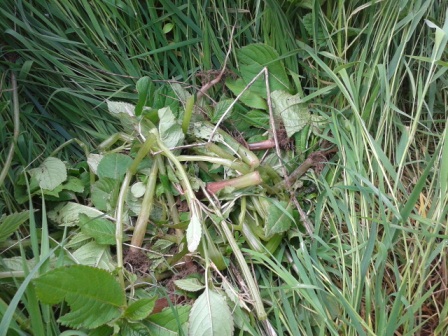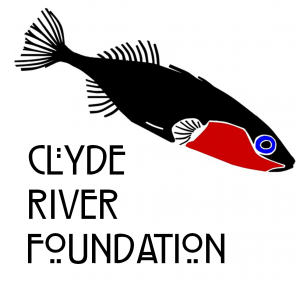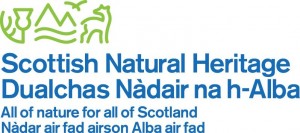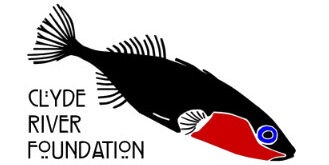Himalayan balsam removal update
Teams of volunteers have been hard at work during July to pull and help stop the spread of Himalayan balsam from the banks of the River Clyde. Events were organised by the Central Scotland Green Network Trust (CSGNT) in association with the Clyde River Foundation, Clyde and Avon Valley Landscape Partnership (CAVLP) and Scottish Natural Heritage (SNH). On Saturday 26th we were worked along the Clyde Walkway at Crossford and we had events earlier in the month at Maudslie Bridge (Thursday 3rd) and Strathclyde Park (Friday 4th). Thanks to everyone’s hard work, thousands of plants have been removed, reducing the spread and numbers of seeds (each plant has ~800 seeds) entering our river habitats. It’s great to see what difference even a few days can make and we’ll be going back to monitor the sites we’ve worked on so far. Hopefully the project will continue and be developed further next year!
A before and after…
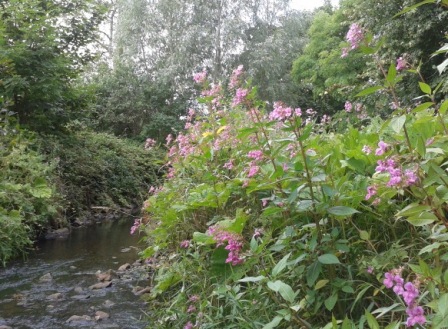
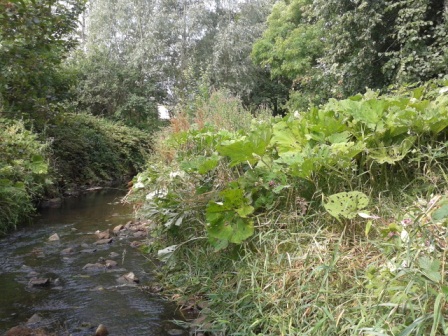
Some Himalayan balsam facts:
- Introduced as an ornamental plant in the early 19th century, subsequently escaped and naturalised along our watercourses. First recorded in the wild in 1855.
- Latin name – Impatiens glandulifera which describes the characteristics of the plant well as the seeds explode on touch when ripe.
- Tall, annual plant reaching heights of 2m+
- Fleshy, reddish-purple stems with nodes (stems not dissimilar in appearance to (small) bamboo stems).
- Reddish- purple, opposite leaves and pink, trumpet-shaped flowers.
- Seed heads become ripe 6 -8 weeks after flowering.
- The explosive seed heads can send their seeds to a distance of 7m from the plant.
- Seeds easily carried by wind or water (upstream, downstream, in floodwater etc).
Key problems:
- Plant out-competes native plants which grow along our riverbanks.
- Increased bank erosion (because the banks are left bare in autumn/winter).
- Distraction of pollinators from native plants, as Himalayan balsam flowers have a lot of nectar and are in flower for much of the summer.
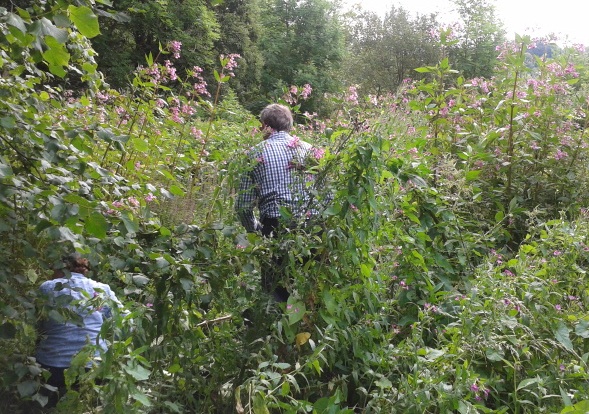
The solution:
One approach – our preferred approach – is pulling. Pulling is the most effective method of control. It reduces the number of seeds entering our rivers and allows for selective removal of plants and limited damage to native species. The method is simple, although long sleeves and gloves essential!
- Plants must be pulled before the seed pods are ripe (usually mid-July onwards), ensuring that the plant roots are removed.
- Once pulled, break the stem below the bottom node – this step is essential, because plants can survive if they have enough water in their stem to sustain themselves, flower and set seeds or re-root and send up more flowers. At the same time, crush the whole stem throughout.
- Leave broken stems to dry out and decompose – no need to take away from the site!
- Check sites repeatedly throughout the season, removing any new plants up until the first frost.
